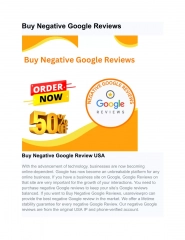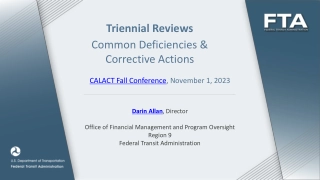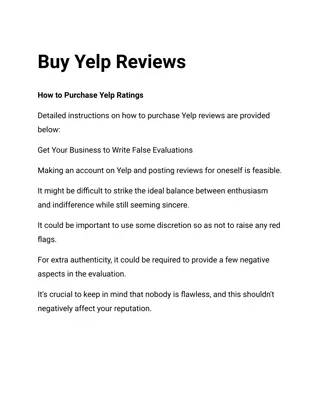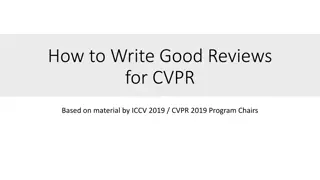
Effective Project Review Process for Product Development Teams
"Learn how to successfully manage project reviews for new product development teams. Discover the importance of following rules, making strategic decisions, and creating a solid business case. Find the balance between autonomy and accountability to ensure project success." (Approx. 320 characters)
Download Presentation

Please find below an Image/Link to download the presentation.
The content on the website is provided AS IS for your information and personal use only. It may not be sold, licensed, or shared on other websites without obtaining consent from the author. If you encounter any issues during the download, it is possible that the publisher has removed the file from their server.
You are allowed to download the files provided on this website for personal or commercial use, subject to the condition that they are used lawfully. All files are the property of their respective owners.
The content on the website is provided AS IS for your information and personal use only. It may not be sold, licensed, or shared on other websites without obtaining consent from the author.
E N D
Presentation Transcript
In This Chapter 1. Discovering what new product reviews are for 2. Following the rules for a successful review 3. Saying no as a project reviewer 4. Running an effective review meeting 5. Creating a project s business case
Many things can change between managements initial decision to resource a project and the time when the product development team has the product ready for market. You don t want managers looking over the product development team s shoulder, second-guessing and getting involved in the day-to-day or week-to-week decisions. On the other hand, you don t want your team moving forward without the benefit of management s wider and more strategic view, and its enthusiastic support.
The solution is a reviewing process. At reviews, the product development team updates reviewers on the project status, and reviewers make decisions to supply necessary resources to projects to continue them through development to the next phase or not. At the heart of the review process is the business case. It gives the team a way to track key financial and strategic project parameters, and it gives members of management necessary project information that allows them to make apples-to-apples comparisons with other projects.
In the product development process, NPD teams and their projects are char-tered (authorized, funded, or given the go- ahead ) by management. This authorization happens early in a project s lifecycle, in what people sometimes call the fuzzy front end. From that point on, teams need to be adequately resourced and have autonomy. They should have the ability to be creative.
However, NPD teams shouldnt be so autonomous and so creative that they stray from the business case approved by management. Your company has to strike a balance and also be prepared to deal with unexpected roadblocks or changes in the business and strategic landscape. What looked like a good project six months or a year ago may not seem like such a good bet today. That s where the reviewing process comes in. In this section, we discuss the main purposes for reviews, and we describe when they should take place.
One big reason why you have to monitor new product projects as they go through the development process is to make sure they don t migrate from the value propositions managers expect them to fulfill. For this reason, companies divide the product development process into phases and punctuate the phases with reviews (or what some companies call gates or decision diamonds). Take a look at the Cheat Sheet in the front of the book to see the major phases and reviews.
During each phase, the development team has a chance to be autonomous and creative; at the reviews following each phase, management gets to see what the team is doing and assess whether the project is meeting the reviewers strategic and financial objectives (see the following section for financial issues). The outcome of a review is like a contract between the team members and the reviewers. The reviewers, representing executives and managers, can give the team the resources and direction it needs to go through the next phase and to the next review.
When management approves a project, they base a significant part of their judgment on What s the return on our investment (ROI) likely to be? Many companies use hurdles or thresholds for example, the company might decide that it will seldom approve a project that won t realize 15 percent over its cost. Companies often hold reviews before project phases during which their investments will increase. For example, if the next phase requires expensive investments in special tooling or manufacturing infrastructure, management should make doubly sure that the project is worth the additional resources. This strategy is just good risk management investing small amounts is okay, but when the sums get larger, the success criteria get firmer.
Phase reviews in the product development process are an important part of what makes a company successful at developing new products. They are not informal meetings where thefolks gather to shoot the breeze about the latest new technologies. They are formal occasions, and the best review ses- sions follow a few basic rules. But don t let this stern warning keep you from enjoying your work! Formal occasions though they are, the best reviews are also places where people who know and respect each other can ask the hard questions and give deserved congratulations for jobs well done.
In order to grow your companys competence in holding phase reviews, teams have to follow guidelines so that they prepare appropriately for the reviews. You can make two big mistakes regarding guidelines: leaving the guidelines unclear and overspecifying them. Good guidelines tell team members exactly what the reviewers need to know and what the team has to accomplish before a review for a phase is scheduled.
Who creates these guidelines? It should be someone in management, because guidelines are effective and useful only insofar as they re followed by a large majority of teams. In many companies, the executives appoint a process owner for NPD. The process owner s responsibility is to manage the processes, includ-ing the review process. This person is also responsible for making sure that processes are changed over time, as his or her company learns what s work- ing and what isn t. (Check out Chapter 8 to find out more about the role of the process owner.)
The following is an example of a deliverables checklist for a project that s nearing the end of development. There s another example in Figure 9-2 that you may want to look at. This checklist was used by a company that manufactured cameras. You ll want to change the items to include the things that are important in your company. The cross- functional team leader (see Chapter 10) can use the checklist to manage the work of the team leading up to a review. After each item, write bywhom, bywhen, and percent complete. When you ve checked all or most of the items as 100 percent complete, your team is ready for the review.
Beta Tests complete Pilot production runs complete; manufacturability confirmed Quality and reliability testing complete Product launch details complete and committed to by functions Market research that demonstrates market acceptance Comparison of manufacturing scale-up plan to marketing launch plan by region Proposal outlining key issues cleaned up and suggests who should be responsible and accountable for each Proposal outlining how we ll measure product performance over time and who will be accountable for the measuring Initial order dates set and committed to by functions Action plan and request for resources needed to proceed to the next phase
Companies usually assume that their teams the product developers need the training on how to make reviews effective. This is true, but reviewers need review training, too. What reviewers expect, teams are likely to do. If your reviewers don t know what to expect, though, trying to improve reviews by focusing on NPD teams is like carrying water uphill in a leaky bucket. An executive should be responsible for making sure that reviewers are trained. The training doesn t have to be a time sink for busy executives. With a well-thought-out plan, most reviewers will get what they need even if the training is limited to JIT (just-in-time training) that gives them what they need to know when they need to know it.
When building a training program for reviewers, include an overview of the following points, at a minimum: You need to know about the project under review before the phase review meeting so that you re ready to make sound and informed deci- sions. If this means contacting functional members of the team before- hand, don t hesitate. For example, if the project is developing technology that is of strategic significance for other projects, be sure to understand how all that is supposed to work. You should know the role the project plays in your company s overall new product portfolio, as well as the resource implications of the project for the new product pipeline. (See Chapter 11 for more on portfolios and pipelines.) You should understand the different types of reviews.
You need to know when its appropriate to call a technical review, for example, instead of addressing technical issues at a phase review. You should understand the purposes of the phase review, which are to determine the individual merits of a project and its ongoing fit with the company s strategic objectives and to make a decision to continue, stop, or recycle a project (see the later section For Reviewers: Knowing When and How to Say No ).
Your NPD team needs to complete many tasks to prepare for a phase review. Preparing for a review includes, but isn t limited to, updating the business case and creating an executive summary. (You can read about the business case in Chapter 9, and we offer plenty more later in this chapter. An executive summary covers all the information contained in the full report which the team will present at the review, but in condensed form. An execu- tive summary shouldn t be longer than one or two pages. If your report has an outline or table of contents, follow that, and write short paragraphs. Write so that if a reviewer reads only the first sentence of each paragraph, she ll still get the gist. o pro- vide a template in the Appendix.)
Having 100 percent attendance seems like a foregone conclusion, right? Not so fast. As companies and new product projects become more and more spread out, it becomes harder to bring a whole team and all the reviewers together for a productive hour of discussion and reflection (see the later sec- tion Inviting the right people to the review to see who should attend). If you re finding it difficult to gather all required review parties, try some approaches that other companies have found successful:
Set aside a time perhaps one day per month when all the reviews take place. If you have a set time, you can expect all the reviewers and the key members of the core NPD team to attend. The drawback of this method is that it can delay projects if your company has a hard stop at the end of each phase before the next phase can start. It works best if your reviews happen around the time of the transitions from one phase to the next. Use videoconferencing to gather reviewers and teams. With video- conferencing, you can still display the team slides, the agenda, and any other necessary information for all the participants to see. Videoconfer- encing works well if your team members and your reviewers are dispersed, which is more and more the case these days.
Create rules of attendance. No one wants to be called out as the cause of project delay and a waster of company resources. Rules of attendance can instill this fear. At DuPont, for example, the PAC (Project Approval Committee) rules state that if more than one PAC member doesn t show, the review is cancelled. A cancellation can significantly delay a project and upset a team. After DuPont put the rule in place, PAC members made sure they attended the sessions. One PAC member participated in a review from a telephone on the side of the road (he was on a bicycling vacation). Another joined a review from a cruise ship. It can work!
The reviewers decision during a phase review isnt really a simple go, stop, or redirect decision. That final word is just the output of the decision-making process the choice the reviewers make after they consider all the options, the information, the debate, and discussion. The decision-making process includes the following: The reviewers assumptions, values, and concerns What the reviewers know or find out about the project What the reviewers understand about the new product portfolio and the resources that are available to the new product pipeline (see Chapter 11) The reviewers takes on the company s market strategy, their under- standing of the company s competenci
The review is a conversation in which the team gets to understand the basis for a decision about a project. Team members also get to inform reviewers about their project and correct misunderstandings. The reviewers should walk away with a better understanding of the project; the team should walk away with a better understanding of exactly what reviewers are expecting and how their project aligns with the company s NPD strategies.
Businesspeople unsentimental, but for some reason, members of review committees often have a hard time saying no. Sometimes, we suspect, it s because they aren t sure that there are any better projects to replace the cancelled ones. If that s a problem in your com- pany, read Chapter 5 for advice on how to come up with plenty of great options. Some executives really don t understand that there s room for only so many projects in the development pipeline. If your executives think this way, get them to read Chapter 11 on Managing Your Corporation s NPD Resources. Whatever the reasons, make sure that the reviewers in your com- pany have a firm grasp on when they should cancel projects and on how they should do so. The following sections show you the way. are supposed to be hardheaded and
Heres a list of appropriate times for reviewers to stop new product projects: At the very beginning of the process: The concepts that you review during the Idea/Concept Screens (see Chapter 6) barely qualify as pro- jects. The team needs to present the review committee with many con- cepts to choose from. The ones that don t make it into the development pipeline should hit the shelves for later or be licensed/sold if they have value that your company isn t likely to use any time soon. At the Feasibility Review (see Chapter 9): After a project passes through the Concept Review, the development team has many questions to answer, including the following:
o How long will it take to develop or acquire the needed technology, and how much will it cost? o Will the proposed product appeal to a large enough market of customers? o Will the margins be high enough for the company to make a good return on its investment? The Feasibility Review is when reviewers and teams should weed out the projects that can t answer yes to these questions. The best-run NPD processes look like funnels up to the Feasibility Review. After that point, you won t mind if your process straightens out and looks more like a tunnel. Be sure, however, that the reviewers aren t closing their eyes to problems that can occur after the Feasibility Review.
During the phase/review process: Reviewers have the opportunity to stop a project at scheduled reviews during the development process. For example, they can stop a project whenever The team and/or the reviewers determine that the project is so far out of bounds that it no longer makes good business sense to pursue it. You run into resource issues. Competitors have changed the basis of competition by introducing products that make the product your company is developing less attractive. Changes to the company s new product strategy usually expressed as a portfolio of products Before or just after launch: No, not lunch. Launch. This should be a last resort. However, if the development team or the reviewers have reason to believe that their expectations for the product were way off, or if it looks like putting the product into market will harm the company s brand or existing products, they should bite the bullet here instead of creating a bigger mess to clean up later.
Stopping a project is really as simple as saying to the team, Weve decided to stop your project. The advice in this section centers on how to stop a pro- ject well how to take care of team members, how to get value from can- celled projects, and so on. First, management should take great care of the team. Next, management can turn its attention to the rejected project. You should try to extract all the value that you can from a stopped project. This benefits a company in sev- eral ways, including helping the development team recognize that the com- pany values its work. The following list presents some possible sources of value from stopped projects:
You may be able to sell or license any intellectual property (IP) youve developed (see Chapter 15 for more on IP). You can shelve the project if it seems like it may be worth developing in the future. You can make the customer visits and other market research the team carried out (see Chapter 4) available to other projects. You can divide the project s resources or what the project has learned among other new product projects. This can be especially useful if a team member s expertise is needed on other projects.
Good new product phase reviews should be set up like any good business meeting. They work best when the right people are in attendance, when every- one comes prepared, when the participants follow a clear agenda, and when all parties come away with a clear decision and goal to reach before the next review. We take you through these requirements in the sections that follow.
The new product team leader(s) should attend every review, as should most or all of the members of the new product core team (see Chapter 10 for more on the team leader and the core and extended teams). The team leader should invite any members of the extended development team whose specific knowledge the team needs in order to answer questions from the reviewers.
The other people who attend reviews are, of course, the reviewers. Reviewers are business and functional heads, managers, and executives who can assess the merits of the project under review while understanding the larger strategic landscape. The reviewers oversee the resources that the team needs to keep the project going. Some companies call these people the Project Approval `Committee, or PAC.
A new product review meeting needs a clear agenda. It also helps if you have a facilitator who can lead the group and write key discussion points on a wall chart. An hour is usually enough for presentation, discussion, and decision but you don t want to waste any of it. For more complex projects, a review may take up to two hours.
A review usually starts with the team leader or the review committee chair calling the meeting to order. The leader or chair reminds the attendees of the purpose of the meeting. The purpose should be a simple variation on this theme: The purpose of this meeting is to review the status of the X project, to address any questions the reviewers may have, and to come to a decision about the next phase of the project.
The team then updates the reviewers briefly on events that have taken place since the last review and presents highlights of the business case. Note: Usually, the team leader will do the presentation, with team members attend- ing in order to answer questions. However, if a part of the presentation is dicey and clearly in the lap of one of the functional members, he or she might present that part.






















